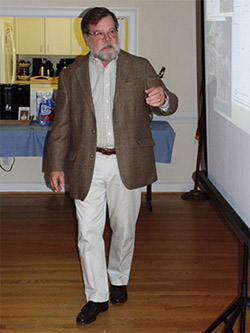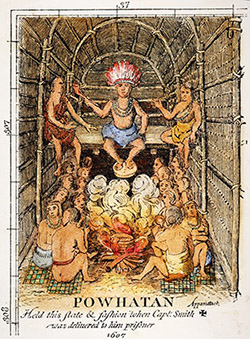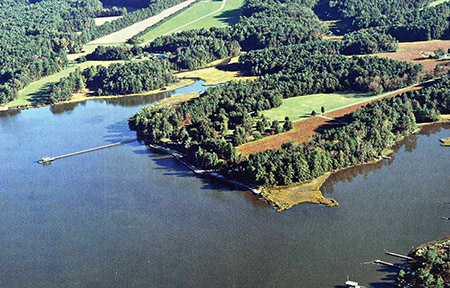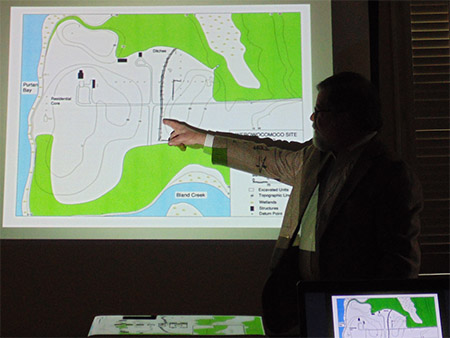 |
The Hanover County Historical Society's quarterly meeting took place on Saturday, June 22, at St. Paul's Episcopal Church in Hanover Courthouse. The speaker was Randy Turner, Archaeologist with the Virginia Department of Historic Resources (retired), who presented In the Footsteps of Powhatan:
Archaeology at Werowocomoco. Over thirty people attended the event.
|
|
Werowocomoco was the headquarters for Powhatan, political and spiritual leader of the Virginia Algonquin tribe, when English settlers first arrived at what would become Jamestown in 1607. Werowocomoco is located on the east bank of the York River, about sixteen miles north of Jamestown.
Powhatan had been suspected to have lived at Werowocomoco, but this was not convincingly proven until the work of Dr. Turner and the Virginia Department of Historic Resources. One of their notable discoveries was that some of the copper artifacts found at Werowocomoco were chemically similar to those found at Jamestown, suggesting that they were contemporaneous.
The meaning of the name Werowocomoco is a bit more of a mystery, but is thought to mean place of peace, or leader settlement.
|
|
 |
|
|

Speaker Randy Turner |
 |

The first European depiction of Powhatan, from John Smith's Map of Virginia, published in 1612 |
 |
Discoveries of charcoal at the settlement that were dated to the late fourteenth century suggested that Werowocomoco had been inhabited for at least that long. Dr. Turner said that Powhatan finally abandoned Werowocomoco a few years after Jamestown was settled, probably due to the nuisance of frequent English visits, peaceful and otherwise: The English proved to be more pesky than the mosquitoes.
Dr. Turner also spoke of his epiphany, in which he noticed for the first time that the town's entrance and main thoroughfare, leading to Werowocomoco's largest structure, ran exactly east to west. This meant that the sun, at the Summer Solstice, would rise directly behind the building: Surely a fitting location for the home of Chief Powhatan! |
|

Werowocomoco's location on the York River |
 |

Dr. Turner points out one of the site's trenches |
|
|  |


